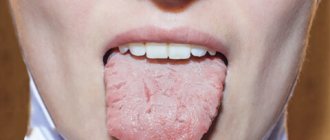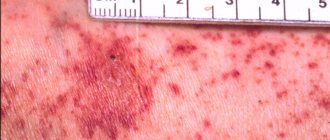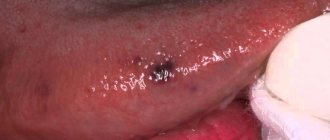The word “deepfake” no longer surprises active Internet users. And what until recently seemed like a joke now seems like an interesting and promising technology. We consider a deepfake to be a certain alien character artificially inserted into a video using neural networks and machine learning. But the meaning of this phenomenon is much broader.
♥ ON TOPIC: Levitagram, or how to create photos with the effect of levitation (flight) on iPhone.
Thus, artificially aging photos using FaceApp is also considered a deepfake. This technology is constantly finding new areas of application that would have seemed unthinkable just a year ago. If earlier we were amazed at how an old photograph came to life, today we can make the character in the photo sing the chosen song.
Surely you remember how in the Harry Potter films the photographs on the walls came to life. It seemed like magic until services with similar capabilities appeared on the Internet. The pictures were run through neural networks, and a short video appeared at the output. But a moving person could live in those times when they didn’t even know how to make movies.
♥ ON THE TOPIC: DMD Clone, or how to create a double in a photo (clone objects) in iPhone.
Structure of the tonsils
The palatine tonsils, or tonsils, are an important organ of the human immune system. The tonsils are located in the oral cavity on both sides of the pharynx. The tonsils are shaped like an almond (hence the name “almond”) and range in size from one to four centimeters in diameter. The tonsils are endowed with a protective function. They are a kind of barrier to bacteria entering the body through airborne droplets, as well as through food intake. The structural features of the tonsils and the functions they perform are directly related to the appearance of tonsillitis plugs in the throat.
Make an appointment right now!
Call us by phone or use the feedback form
Sign up
On the surface of the tonsils, winding canals and openings are visible - lacunae and crypts.
When viruses from the outside enter the mouth, leukocytes in the tonsils are activated and begin an intensified process of forming antibodies that fight the “enemy.” At the same time, a signal is sent to all organs of the immune system, and the body comes into “combat readiness”.
Localization
Depending on the zone and nature of the localization of tumors, the following types of tumors are distinguished.
Cheek cancer
Lesions are often found more often on the line of the mouth, approximately at the level of the corners. At the initial stage of development it resembles an ulcer.
Later, the patient feels some restrictions when closing and opening the jaw. Discomfort is also noted when chewing food and talking.
Floor of the mouth
The location of the focal zone is observed on the muscles of the floor of the mouth with possible capture of nearby areas of the mucous membrane (the lower part of the tongue with the transition to the salivary glands). The patient experiences severe pain and excessive salivation.
Language
The tumor is localized on the lateral surfaces of the tongue. Tangible discomfort is noted when talking and chewing food.
This type occurs more often than the location of lesions on the upper and lower tissues of the tongue, involving the tip and root.
Cancer in the alveolar ridge area
Lesions can form on the upper and lower parts of the mouth, affecting the teeth. This causes bleeding gums and pain when light pressure is applied to the teeth.
Palate cancer
The palate consists of soft and hard tissues. Depending on which of them were affected, the type of cancer is diagnosed.
Squamous cell carcinoma forms on soft tissues, and when the lesions are located on the hard palate, they are identified as: cylindroma, adenocarcinoma, squamous cell type. Pain and discomfort that arises during chewing and talking should alert you.
Metastases
Cancer is characterized by the ability to spread into adjacent layers. The direction of metastases is determined by the lymph nodes; it is to them that the tentacles crawl.
Each type of cancer has its own vector of movement:
- with oncology of the cheeks and alveolar processes of the lower jaw, metastases move to the submandibular nodes;
- formations in the distal sections are directed to the nodes near the jugular vein;
- in case of tongue cancer with the affected area of the tip or sides, metastases spread to the lymph nodes of the neck, sometimes involving the submandibular nodes;
- with pathology, the tentacles crawl towards the internal organs and also affect bone tissue.
What is tonsillitis?
Tonsillitis is an inflammatory process in the tonsils. The disease can be acute or chronic. The acute form is better known as tonsillitis. In chronic cases, periods of exacerbation (inflammation of the tonsils) are replaced by a period of remission (calm). Most often, the disease occurs in children 5-15 years old, although adults are also susceptible to the disease. The tonsils in children are larger than in adults. The palatine tonsils reach their maximum size by the age of 7, and then begin to shrink. Constant viral attacks on the tonsils lead to tonsillitis. Chronic tonsillitis most often acts as a complication after an infectious disease (sore throat, caries, etc.). The chronic form of the disease, according to statistics, occurs in 5% of adults and 11% of children. That is, chronic tonsillitis is a common disease. Tonsillitis plugs on the tonsils often appear with chronic tonsillitis.
Precancerous diseases
There are pathological processes that precede malignant formations. According to the medical classification, the following diseases pose a potential danger.
Bowen's disease
Modern scientists consider the disease as intraepithelial oncology
The pathology was described back in 1912 by Bowen and classified as a precancerous condition.
Modern scientists consider the disease as intraepithelial oncology, but in the International Histological Handbook it is identified as a risk factor.
Symptoms:
- rashes of a nodular-spotty nature;
- the location of the lesion is predominantly in the posterior parts of the oral cavity;
- the surface of the affected area of the mucosa is velvety;
- over time, atrophy of the oral mucosa appears;
- formation of erosions on the surface of the lesion.
When diagnosing, it is differentiated from red lichen and leukoplakia. The disease is accompanied by unpleasant symptoms.
The surgical method is chosen as the treatment method. Affected areas of mucous membrane and tissue are completely removed. If there is a large affected area, complex therapy is used.
Leukoplakia
One of the provoking reasons is frequent exposure to irritants on the oral mucosa
The disease is characterized by increased keratinization of the mucous tissue; lesions are localized on the inside of the cheeks, corners of the mouth, and tongue.
One of the provoking reasons is frequent exposure to irritants on the oral mucosa.
These can be either bad habits (tobacco, alcohol), or spicy or hot foods.
An improperly shaped denture can create favorable conditions for the development of leukoplakia.
Symptoms:
- slight burning sensation;
- tightening of the mucous membrane, which creates discomfort when talking and eating;
- itching;
- formation of white or gray plaques (diameter 2-4 mm).
The essence of treatment is to eliminate irritating factors, take a vitamin complex with a high content of vitamins A and E, treat the lesions with special solutions or undergo surgery.
The regimen is selected individually, depending on the form of leukoplakia.
Papilloma
Both stressful situations and injuries can provoke active growth of papillomas.
The disease can be recognized simply by the intensive formation of papillomas on the oral mucosa.
Both stressful situations and injuries can provoke active growth.
Symptoms:
- formation on the oral mucosa of rounded pedunculated papillomas with a warty, granular or folded surface (size 0.2-2 cm);
- localization mainly on the hard and soft palate, tongue;
- pain, bleeding, deterioration in the person’s physical condition are not noted.
Treatment of papillomas includes surgery to cut off the formation from the mucosa, as well as antiviral and immunomodulatory therapy.
Erosive-ulcerative form of lupus erythematosus and lichen planus
The course of the disease occurs in an acute form and with a benign clinical picture
Erosion formations are localized on the oral mucosa and lips.
The course of the disease occurs in an acute form and with a benign clinical picture.
The exact provoking factors have not been identified, but there is an opinion that ulcers and erosions appear as a result of sensitization to various infections, as well as due to malfunctions of the immune system.
Symptoms:
- the appearance of many red spots that transform into erosions and ulcers;
- sensations of dryness and roughness in the mouth;
- in the area of the lesions, the surface is covered with a fibrinous lesion.
The treatment regimen includes the use of antifungal, anti-inflammatory, and painkillers.
Sedatives, immunostimulating agents, and vitamins are also prescribed. If necessary, physiotherapeutic methods are used: phonophoresis, electrophoresis. In difficult cases, surgical intervention is resorted to.
Post-radiation stomatitis
Complications of radiation sickness lead to the development of post-radiation stomatitis
Formed after procedures using ionizing radiation, carried out with violations.
The disease can be triggered by careless handling of radioactive isotopes, resulting in burns on the oral mucosa.
A complication of radiation sickness leads to the development of post-radiation stomatitis.
Symptoms:
- dizziness, physical weakness;
- dullness of the face;
- dry mouth;
- pallor of the mucous membrane;
- formation of white spots in the mouth;
- loosening of teeth.
To diagnose the problem, anamnesis, a clinical picture of the disease, and a blood test are used.
The treatment regimen includes:
- development of a special diet;
- thorough sanitation of the oral cavity;
- treatment of the mucous membrane with an antiseptic solution.
Causes of chronic tonsillitis
The chronic form of tonsillitis often develops as a complication after a sore throat. Many patients try to cure a sore throat on their own and take medications uncontrollably. Some, having received doctor’s recommendations, do not follow the instructions and finish the course of taking antibacterial drugs earlier than expected, noticing an improvement. This is a huge mistake! Untreated sore throat causes the disease to enter the chronic stage and the formation of tonsillitis with purulent plugs. The main causative agents of the disease are streptococci and staphylococci.
Exacerbation of tonsillitis is favored by:
- chronic inflammatory process (sinusitis, caries, sinusitis, etc.);
- proliferation of adenoids;
- deviated nasal septum;
- damage to the tonsils;
- hypothermia;
- weak immunity.
Why do traffic jams occur with tonsillitis?
The main factor in the formation of purulent plugs on the tonsils is the constant presence of a focus of inflammation, provoked by viruses. There are always bacteria in the human mouth - they are not dangerous to health. Once in the gaps, they are killed by immune cells. The tonsils of a healthy person are capable of self-cleaning - dead microorganisms are removed from the lacunae and enter the stomach with saliva, where they are destroyed under the influence of gastric juice.
But as soon as dangerous viruses enter the body, a large number of leukocytes are sent to fight them, the mucous membrane of the tonsils swells, and self-cleaning of the lacunae under such conditions becomes difficult. Dead bacteria and leukocytes begin to accumulate in the tonsils - purulent-caseous formations appear. If you do not consult an otolaryngologist in time and do not begin treatment for purulent tonsillitis plugs, the process can become irreversible and lead to the destruction of the tonsils.
Causes of oral cancer
There is strong evidence that the following factors increase the risk of developing RCC.
Tobacco
Most cases of RPD are associated with tobacco use. All forms of tobacco increase the risk of developing this cancer, including cigarettes, cigars, pipes, bidis, and smokeless tobacco (including chewing tobacco and snuff). The risk of RCC increases significantly when smoking is combined with smokeless tobacco use or alcohol consumption. Continuing to smoke after treatment for RPR increases the risk of relapse.
Alcohol
This is also an important risk factor for the development of RPR. The more a person drinks, the greater the risk. Concomitant use of alcohol and tobacco increases the risk of developing oral cancer to a greater extent.
Betel (areca nut)
Chewing cuticle or areca nut is common in South Asia. Betel, or paan, is an areca nut (the seed of the fruit of the eastern palm) and lime wrapped in a betel leaf. Betel nut and tobacco are often chewed together. People who chew betel nut or areca nut have a higher risk of developing oral cancer, especially on the inner cheeks and lips.
Human papillomavirus (HPV)
HPV infection can cause several forms of cancer, including cancer of the penis, cervix, vulva, vagina, anus, mouth and throat. Infection with HPV-16 (to a lesser extent, HPV-18) increases the risk of developing RPR. HPV infection is probably the leading cause of RCC that is not associated with tobacco or alcohol use.
Previous oncological diseases
A malignant tumor of the esophagus, larynx, lung or cervix increases the risk of developing RPR.
Family history of squamous cell carcinoma (SCC)
There is a higher risk of developing SCC in the head and neck area (including the mouth) if a close relative has been diagnosed with head and neck SCC.
sunlight
Sunlight is the main source of ultraviolet radiation for most people. Lip cancer is more common in people who work outdoors, where they are exposed to sunlight for long periods of time.
Diet low in vegetables and fruits
Many studies show that insufficient consumption of vegetables and fruits increases the risk of developing RCC.
Weakened immune system
RPR and oropharynx are more common in people with weak immune systems. A weak immune system is associated with certain diseases present at birth, acquired immunodeficiency syndrome (AIDS), and certain medications (such as medications given after an organ transplant)
Graft versus host disease (GVHD)
GVHD is when healthy transplanted stem cells see the body as foreign and begin to destroy its cells. Damage to cells in the mouth from GVHD increases the risk of developing RPR. People who receive a stem cell transplant may have GVHD.
Lichen planus
Lichen planus is a chronic disease that forms rashes or sores on the skin and mouth, usually on the tongue, gums and lining of the cheeks.
Poor oral health
Research shows that people with poor oral health have a higher risk of developing oral cavity disorder.
Hereditary predisposition
People with hereditary diseases have a higher risk of developing precancerous changes in the oral mucosa. Moreover, a malignant tumor develops at a much earlier age than RCC caused by other risk factors.
Fanconi anemia is a rare genetic disorder that affects the bone marrow so it doesn't have enough red blood cells, white blood cells, or platelets.
Dyskeratosis congenita is a genetic syndrome that can cause abnormal red blood cells, skin rashes, and toenails and toenails.
Possible risk factors
Certain factors may be associated with RPD, but there is not yet sufficient evidence to confirm this. More research is needed to clarify the role of these factors.
Ill-fitting dentures can increase the risk of developing RPR. This can happen because dentures rub against the gums and cause sores that can develop into cancer.
Studies have shown that those who drink very hot drinks have a higher risk of developing RBD. Hot drinking can cause damage to oral cells, which can lead to cancer.
Purulent formations and chronic tonsillitis
In the chronic form of the disease, inflammation in the tonsils does not completely disappear, but only subsides for a while. Bacteria are always present in the lacunae of the tonsils, and the increased formation of a large number of leukocytes does not stop. Since the chronic form is characterized by the absence of pronounced signs of the disease, the appearance of purulent plugs goes unnoticed by the patient. White blood cells surround the bacteria, and a purulent formation appears. Over time, substances containing calcium and magnesium accumulate in them. As a result, the plugs harden.
Among the reasons for the formation of traffic jams are:
- diseases of the nasal cavity that are chronic (for example, sinusitis) - some of the bacteria from the nose certainly gets into the throat;
- lack of proper oral hygiene - here bacteria are constantly present and when immunity decreases, they enter the tonsils; food debris can also get stuck in the gaps and become “material” for the hardening of purulent masses;
- weak immunity - a person is unable to cope with the infection on his own, and the disease becomes protracted or chronic;
- damage to the tonsils - infection can easily get into the wound. Often it is the site of injury that becomes the location of a new purulent formation.
Treatment of oral cancer
Radiotherapy
Radiation therapy for RPR has two undeniable advantages.
- The normal anatomy and functionality of the oral cavity are preserved.
- General anesthesia is not required.
But it also has three significant drawbacks.
- Side effects.
- Recovery is rare, especially with large tumors
- Subsequent surgery will be more difficult and dangerous, and survival rate will be further reduced.
Radiation therapy can be carried out by external beam radiation (which is usually accompanied by significant side effects) or interstitial therapy (eg, brachytherapy, plesiotherapy).
In Belgium, iridium implants (Ir 192) are used to reduce the side effects of radiotherapy for RPR. Over the course of several days, they deliver a radiation dose equivalent to external beam radiation therapy, but limited to the immediate area of the lesion.
Plesiotherapy is also often used in cancer centers in Belgium, as it causes even fewer complications, but it is only suitable for tumors smaller than 2 cm.
Of the early complications, the most serious is oral mucositis. It invariably follows radiation therapy using external beam radiation and can have a significant impact on quality of life. Sometimes oral mucositis is so severe that treatment must be stopped. The complication affects up to 40% of patients.
Long-term complications of radiation therapy, such as dry mouth (xerostomia), loss of taste, or osteoradionecrosis, may also be of concern.
Radiation therapy also complicates future operations because the resulting endarteritis slows healing.
Prevention as well as treatment of complications of radiotherapy are of paramount importance. They should be performed by a multidisciplinary oncology team, including a dental practitioner as well as an oral hygienist.
Surgery
For a disease such as oral cancer, surgery is the main method of treatment. The goal of surgery for squamous cell carcinoma (OSCC) is to remove the primary tumor along with a margin of clinically normal tissue to ensure complete removal of the malignant tissue. Thus, the surgery provides a one-step procedure from which the patient usually recovers within 10 to 14 days.
Depending on the stage or location of the tumor, you may have one of the following types of surgery.
A wide local excision removes the tumor along with a margin of normal tissue around it. It is used for small early stages of RPR.
A glossectomy is an operation to remove part or all of the tongue.
A mandibulectomy is surgery to remove part or all of the lower jaw.
A maxillectomy is an operation to remove part or all of the upper jaw.
Neck lymph node dissection is usually done when cancer has spread to the lymph nodes in the neck. This can be done at the same time as surgery to remove the tumor. It may also be done to prevent the cancer from spreading and reduce the risk of it coming back (recurrence), or to determine whether the cancer has spread to the lymph nodes or not.
A gastrostomy involves inserting a tube into the stomach to provide nutrition.
A tracheostomy is often done during RPR surgery that involves the head and neck so that swelling after surgery does not affect your ability to breathe. A tracheostomy is also necessary when a tumor presses or blocks the trachea and makes breathing difficult.
Tooth extraction (tooth extraction).
Reconstructive surgeries are used to restore the function and appearance of the mouth. Although modern reconstructive techniques can provide good facial aesthetics and functionality, complete restoration cannot be achieved in advanced cases.
Chemotherapy
There are two main chemotherapy treatment options for RCC.
- In operable forms, this is adjuvant chemotherapy with platinum drugs (cisplatin, carboplatin), sometimes in combination with 5-fluorouracil.
- For advanced and inoperable forms, this is maintenance therapy using paclitaxel or doxitoxel.
Immunotherapy
EGFR inhibitors affect signal transduction pathways, thereby inhibiting cell proliferation. The main EGFR inhibitors are cetuximab and panitumumab.
Cetuximab (Erbitux®) is a monoclonal antibody and the only targeted therapy currently approved by both the FDA and EMA for the treatment of certain patients with RCC. It is often used with chemotherapy or radiation therapy.
Cetuximab in combination with radiation therapy has comparable toxicity to radiation therapy alone, with the exception of increased incidence of infusion reactions, acne, and mucosal toxicity.
Panitumumab is currently mostly used in experimental treatment regimens for oral cancer abroad. It can cause stomatitis.
Erlotinib and gefitinib are small molecule EGFR TKIs used in some treatment regimens in Europe and Belgium. They are prescribed to patients with advanced disease.
Antiangiogenic approaches with mTOR inhibitors (eg, rapamycin sirolimus, everolimus, temsirolimus, deforolimus) or antibodies to vascular endothelial growth factor (VEGF) also show some promise and may be offered to patients in Belgium as experimental therapy.
Palliative care
Palliative therapy for advanced or inoperable forms of RPR helps patients cope with the main manifestations of the disease, as well as maintain an acceptable quality of life.
In Belgium, special attention is paid to this type of treatment. Surgeries are used to restore the ability or facilitate nutrition. Procedures are carried out for long-term pain relief or to prevent complications.
Symptoms of purulent plugs in the throat
Traffic jams are a factor by which chronic tonsillitis can be recognized. Therefore, when traffic jams appear, all the signs of this chronic disease are present. The following symptoms can be identified during an exacerbation of tonsillitis.
Constantly recurring sore throats - if there is inflammation in the tonsils, then this is not an indicator of chronic tonsillitis. But if a person is susceptible to the disease more than two or three times a year, then we can confidently say that we are dealing with a chronic form of the disease.
Friends! Timely and correct treatment will ensure you a speedy recovery!
The next symptom is redness and swelling of the palatine arches, to which inflammation from the tonsils can spread. Adhesions can form between the palatine arches and the tonsils - they seem to stick together with each other.
Enlarged lymph nodes are another sign of the disease. The manifestation of tonsillitis is accompanied by elevated body temperature. In the chronic form, a temperature of 37°C can last from several days to several weeks. The patient feels constant fatigue, lethargy, and performance decreases. All these are signals of adverse changes occurring in the body.
Stages
Oncological disease has several stages of development.
Each stage is characterized by certain tumor parameters and the extent of the affected area:
- Oncological disease has several stages of development
Stage zero – the neoplasm is localized no deeper than the mucous layer, the size of the tumor is small.
- The first is that the tumor parameters reach no more than 2 cm, the cancer does not spread to other tissue areas.
- The second is that the tumor grows up to 4 cm, the tumor progresses, but the affected area does not yet reach the lymph nodes.
- Third – the tumor size exceeds 4 cm, the disease affects the lymph nodes.
- The fourth stage is characterized by the presence of metastases that have spread their tentacles into the internal organs (most often the lungs). The distribution of the focal zone is observed on the bone tissue of the face and sinuses.
Symptoms of purulent plugs in the throat
The first sign is a feeling that there is something in the throat: like a lump; A dry cough may accompany these unpleasant sensations. The patient has difficulty swallowing and has a sore throat.
Severe pain in the throat is accompanied by a putrid odor from the mouth, which cannot be muffled even with the help of toothpastes. This smell is the result of the activity of bacteria accumulated in traffic jams. Caseous formations are also visible upon visual inspection - curdled tubercles of a white-yellow hue are immediately noticeable on the tonsils. It happens that the pustules are not immediately visible, but as soon as you press on the surface of the tonsil, for example, with your tongue, these white-yellow tubercles begin to appear.
Blockages in the tonsils can bring a lot of unpleasant and even dangerous consequences to the patient: if the infection travels with the blood or lymph flow further through the body, it can cause problems with the heart, kidneys and joints. In order not to have to treat complications from tonsillitis, it is necessary to get an appointment with an otolaryngologist in a timely manner and begin treatment for tonsillitis with purulent plugs.
Diagnostics
If bone tissue damage is suspected, the doctor will issue a referral for x-rays.
Oral cancer is diagnosed by visual examination and palpation.
When contacting a neoplasm, the location, density of the structure, and degree of growth are taken into account.
If bone tissue damage is suspected, the doctor will issue a referral for an x-ray.
Differential diagnosis helps make a diagnosis, when a set of symptoms is compared with other or concomitant diseases.
The following studies help clarify the picture: ultrasound, CT, MRI.
The final diagnosis is made after receiving the biopsy result. The study is carried out in a laboratory method on the removed part of the tumor.
Treatment of tonsillitis plugs
The appearance of plugs indicates long-term inflammation occurring in the body, so the removal of purulent plugs must be combined with measures to treat chronic tonsillitis. Chronic tonsillitis should be treated by a competent otolaryngologist. Only an ENT doctor knows how to treat tonsillitis plugs effectively and safely. There is no need to try to get rid of pustules on your own at home. Many patients begin to put pressure on the tonsils, scraping off the “plaque” with a spoon and other improvised means. But this measure is ineffective - pus is removed only from the surface, but this is only the tip of the iceberg, the main problem is inside. Such inept actions often lead to injury to the tonsils, which will only provoke the appearance of new caseous formations.
Conservative method of removing tonsillitis plugs
Conservative treatment consists of:
- Treatment with medications (antibiotics and the duration of treatment is prescribed directly by the ENT doctor. Treatment of chronic tonsillitis should begin at the time of exacerbation, not remission. As a rule, the patient is prescribed the drugs “Amoxicillin”, “Amoxiclav”, “Summamed”, “Azithromycin”, etc. .).
- Gargling (solutions of furatsilin, soda, decoctions of chamomile, St. John's wort, string, from pharmaceutical products - Miramistin, Rotokan, etc. are excellent).
- Inhalations (as agreed with the doctor).
- Rinsing the lacunae of the tonsils (the most effective method for removing purulent accumulations. Performed only by an otolaryngologist. Rinsing is carried out using a syringe or a TONZILLOR device.
When carrying out a course of rinsing, the patient's condition significantly improves, the tonsils look healthier, and are cleared of purulent accumulations.
With chronic tonsillitis, the period of remission of the disease increases.
Surgery
Tonsillectomy - removal of the tonsils - is the most radical way to get rid of the problem. It is used in the most extreme cases, when conservative methods do not bring the desired relief, and the indications for surgery must be quite serious. Before removing tonsils, you need to carefully weigh everything and first try a full range of conservative treatment measures. By removing the tonsils, you are deprived of a natural natural barrier against viruses and infections. You need to fight to preserve your tonsils to the last!
Tonsils are removed using a scalpel, laser or liquid nitrogen. Your ENT doctor will definitely tell you about all the intricacies and consequences of tonsillectomy.
Traditional medicine and preventive measures
Treatment with folk remedies for removing accumulated pus is not entirely effective - plugs located deep in the tonsil cannot be removed. With their help, you can only soften the surface of the plugs to facilitate their rejection and use herbal decoctions when gargling and disinfecting it.
To reduce the risk of traffic jams, you need to follow some simple tips:
- carefully monitor oral hygiene;
- treat sore throat and inflammation in the nose and mouth in a timely manner: sinusitis, frontal sinusitis, caries, stomatitis;
- avoid hypothermia;
- for chronic tonsillitis, follow the recommendations of your ENT doctor, do not forget about preventive complexes of physiotherapy and tonsil rinsing;
- Strengthen your immune system and try to lead a healthy lifestyle.
Stomatitis and treatment at home
Treatment of stomatitis at home primarily involves the use of various herbal decoctions and infusions with antiseptic, anti-inflammatory and immunostimulating effects. For example, even doctors recommend rinsing with calendula - it has a strong antimicrobial and anti-inflammatory effect and promotes healing. Chamomile is an excellent antiseptic - it is one of the most popular remedies that is widely used in folk and official medicine.
Stomatitis is treated using folk remedies not only for rinsing, but also for oral administration. For example, rosehip decoction is a real storehouse of vitamins and other substances necessary for the human body. It improves immunity, prevents the development of inflammatory processes, and also helps destroy harmful bacteria. Despite the miraculous power of herbs, it should be remembered that candida and herpetic stomatitis will not be eliminated by such folk treatment, since fungi and viruses are not affected by antiseptic, anti-inflammatory and immune-modifying agents.
Treatment at the ENT Clinic of Doctor Zaitsev
Many years of experience of our doctors allows us to say with confidence that treating chronic tonsillitis is our specialty. The modern equipment of the clinic allows for effective and safe manipulations to treat tonsillitis and remove purulent plugs. Washing of the tonsils is carried out using all methods known in practice, including using a modified TONSILLOR nozzle, which has no analogues in other medical institutions. This is the know-how of our clinic. The modified attachment is much more effective than the usual one, completely safe, its use does not cause pain to the patient and is suitable even for small children.
Please make an appointment and come. We will be happy to help you.
Symptoms
The following signs may be a reason to contact a specialist:
- Thickening of the tongue, which causes discomfort when eating and talking, is a sign to see a doctor
numbness of the gums and several teeth;
- thickening of the tongue, which causes discomfort when eating and talking;
- numbness of the tongue;
- an increase in the parameters of the lymph nodes located in the neck area;
- swelling in the jaw;
- sudden weight loss;
- voice deformation;
- pain in the mouth;
- tooth loss without good reason;
- the appearance of formations on the oral mucosa that do not go away for a long time even with the use of wound-healing ointments and lotions (these can be red and white spots, ulcers, lumps, growths).









